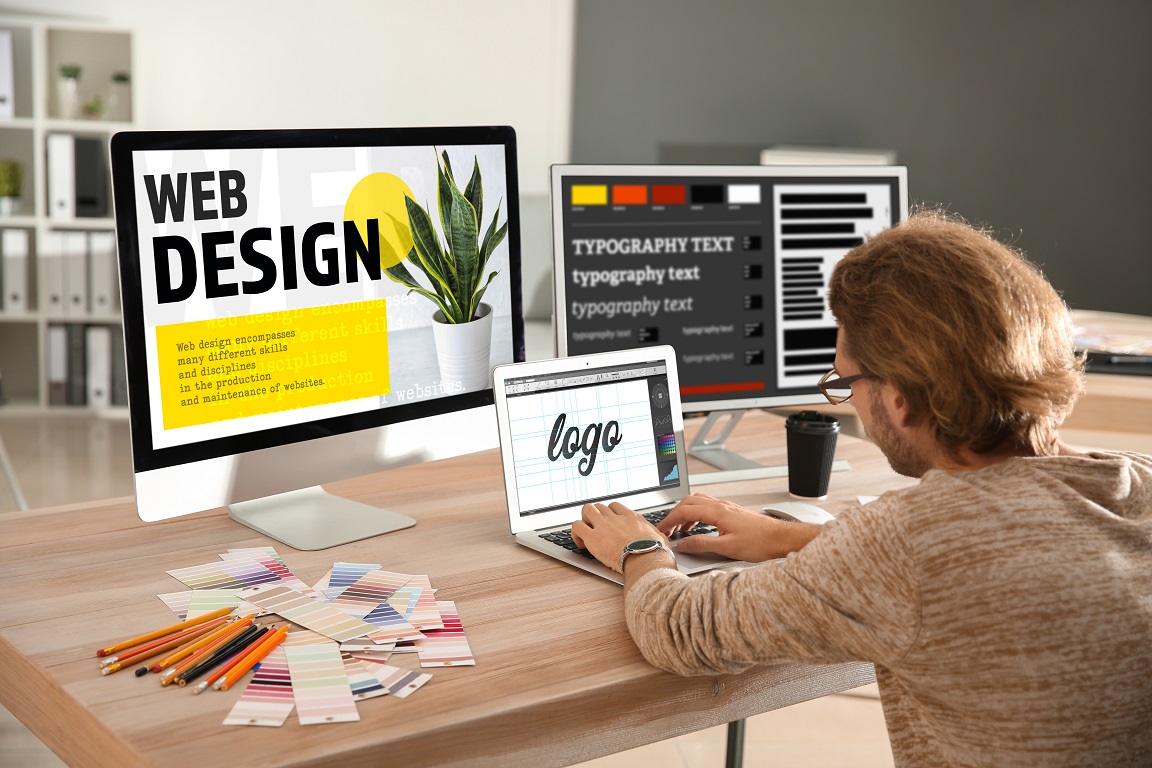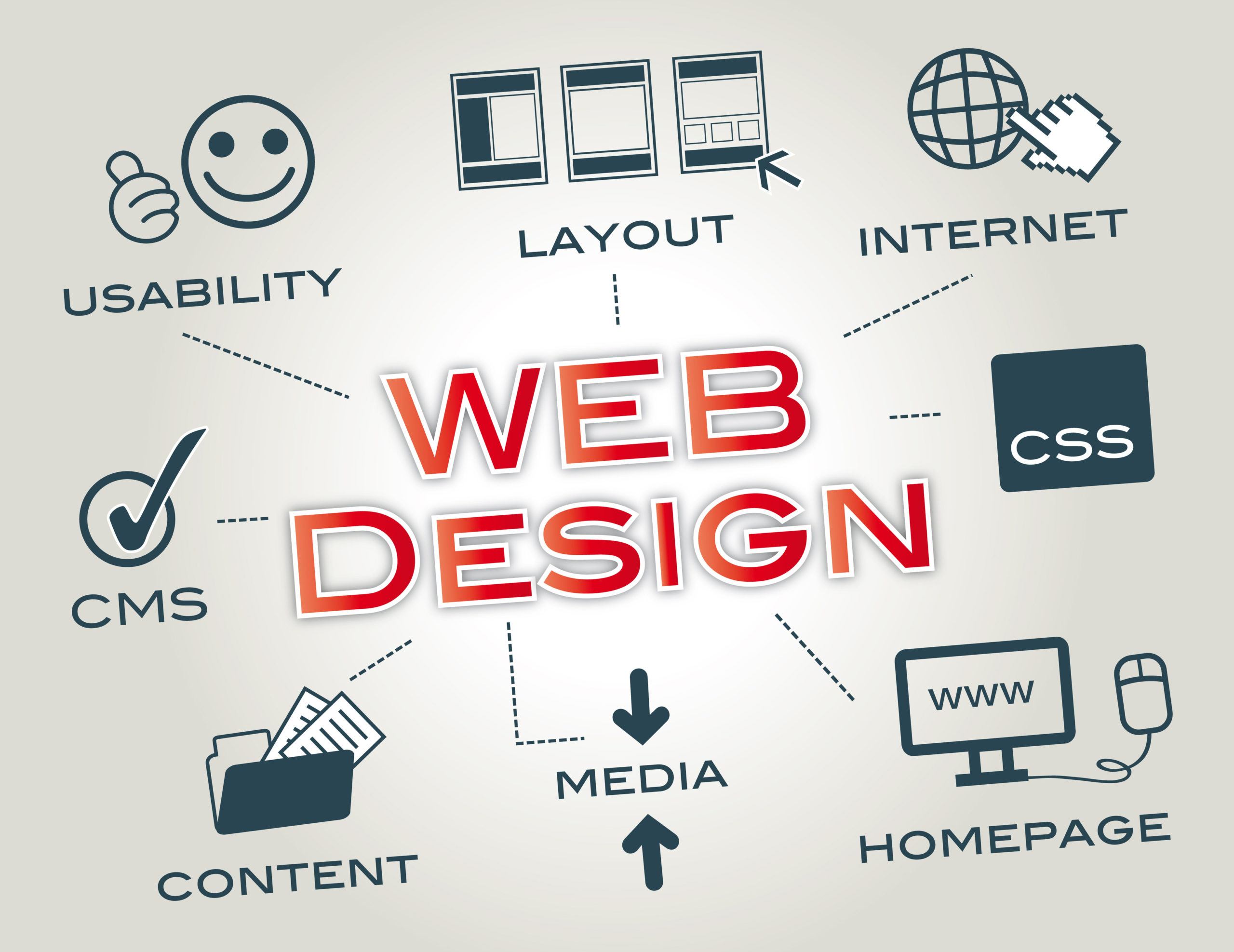How a web design company improves user experience and boosts conversions
Wiki Article
Exploring Imaginative Fads in Web Design for Modern Organizations
The landscape of web design is consistently advancing, mirroring the dynamic requirements of modern businesses. Recent patterns highlight a choice for minimalism, vibrant typography, and interesting interactivity. Firms significantly prioritize user experience with mobile-first concepts and tailored content. Additionally, an emphasis on sustainability is gaining traction. Understanding these patterns is necessary for companies intending to stick out in a crowded industry. What effects do these changes hold for the future of digital engagement?Accepting Strong Typography
Bold typography has emerged as a specifying element in contemporary web design, catching focus and conveying messages with striking clarity. This trend prioritizes aesthetically impactful message that enhances user interaction and brand name identity. Designers often utilize one-of-a-kind fonts and oversized typefaces to create a hierarchy, leading viewers via material flawlessly.
The critical usage of strong typography permits reliable narration, allowing brand names to communicate their worths succinctly. It serves not only visual objectives however additionally functional ones, as it boosts readability across tools and screen dimensions.
As websites compete for user attention, bold typography sticks out in a saturated electronic landscape. Its versatility makes it possible for developers to try out contrasting layouts and shades, further intensifying its performance. Eventually, accepting vibrant typography stands for a change towards more expressive and communicative web design, cultivating a much deeper connection between brands and their target markets.
The Surge of Minimalist Design
As electronic environments come to be significantly chaotic, the increase of minimal layout uses a rejuvenating option that prioritizes simpleness and performance. This layout viewpoint strips away unneeded elements, allowing web content to take spotlight. By concentrating on tidy lines, sufficient white area, and a minimal color palette, minimal layout enhances user experience and enhances navigation.Businesses embracing this fad goal to convey their brand message plainly and properly, cultivating a feeling of calmness and clarity. The lack of disturbances assists customers concentrate on necessary info, causing boosted engagement and conversion prices. Additionally, minimal layout lines up well with mobile-first approaches, guaranteeing that websites continue to be straightforward and accessible throughout numerous devices.
Ultimately, the surge of minimalist design shows a wider shift towards focusing on user requirements and choices, making it a powerful device for contemporary services wanting to make a long-term effect in the digital landscape.
Immersive Animations and Interactivity
While many internet developers accept minimal aesthetic appeals, an additional compelling pattern getting grip is making use of immersive computer animations and interactivity. This strategy boosts user involvement by developing appealing experiences that attract visitors right into the web content. Developers utilize vibrant elements such as animated backgrounds, scrolling effects, and interactive infographics to connect complex concepts in an available fashion.These computer animations not just provide visual passion however additionally guide users through the navigation process, making communications more user-friendly. As an example, hover impacts and computer animated shifts can encourage customers to discover additionally, causing enhanced time spent on the website.
This pattern straightens with the wider movement in the direction of storytelling in web layout, where animations serve as narrative tools that communicate brand messages successfully. By integrating immersive animations and interactivity, businesses can separate themselves in a congested online landscape, eventually improving user satisfaction and brand name commitment.
Mobile-First Layout Concepts
Mobile-first style principles stress focusing on user experience by making certain sites operate effortlessly on smaller sized screens. This strategy integrates responsive design strategies that adapt to different gadget sizes while preserving visual stability. Furthermore, it concentrates on touchscreen navigation style, enhancing use for mobile individuals.Prioritizing User Experience
Just how can developers effectively focus on user experience in an increasingly mobile-centric world? Highlighting mobile-first layout concepts is vital, as customers largely involve with web sites through mobile devices. This technique urges developers to streamline material, guaranteeing it is conveniently available and accessible on smaller sized displays. Key methods consist of streamlining navigating, lessening load times, and utilizing touch-friendly components that boost interactivity. Furthermore, focusing on readable typography and user-friendly designs can considerably improve user fulfillment. Developers should continuously gather user comments to fine-tune their techniques, adapting to evolving user demands and choices. By focusing on these elements, businesses can develop an interesting digital experience that fosters commitment and drives conversions, inevitably straightening with the expectations these days's mobile customers.Responsive Format Methods
Developers welcome responsive layout strategies to create flexible and flexible internet experiences that accommodate numerous screen sizes. This technique focuses on mobile-first layout concepts, ensuring peak functionality on smaller devices prior to scaling up for larger displays. By making use of fluid grids, adaptable photos, and media queries, designers can maintain a cohesive visual identification across all platforms. This technique not just enhances user interaction but additionally boosts search engine positions, as mobile-friendly sites are preferred by search formulas. Furthermore, responsive layouts permit companies to get to a wider target market, suiting individuals on tablets, desktops, and smart devices alike. On the whole, executing these techniques is essential for modern web design, ensuring that organizations continue to be affordable in an ever-evolving electronic landscape.Touchscreen Navigating Layout
With the rise of smart phones, touchscreen navigation has actually ended up being a basic aspect of web design. Developers are progressively taking on mobile-first concepts to enhance user experience and interaction. agency for web design. Efficient touchscreen navigation prioritizes bigger switches and user-friendly gestures, permitting customers to engage conveniently with content. This approach decreases frustration and encourages exploration, as individuals can browse seamlessly with their fingers. Additionally, integrating swipe gestures and tap capability provides to the natural habits of mobile users. Comments mechanisms, such visit the site as aesthetic hints and computer animations, boost functionality better by verifying actions. As touchscreens dominate user communications, utilizing these style aspects not only aligns with modern-day assumptions but additionally cultivates an extra available and delightful surfing experience for all customersCustomized User Experiences
What makes a user feel absolutely engaged on a try this website web site? The answer usually depends on individualized user experiences. By tailoring web content and navigation to individual choices, services can create a meaningful link with their target market. This personalization can be attained through numerous techniques, such as evaluating user behavior, utilizing cookies, and providing personalized suggestions based on previous communications.As an example, shopping systems that recommend items based on searching background not only enhance user experience but additionally increase conversion rates. Incorporating vibrant web content that adjusts to the user's area or time of day can additionally enrich engagement.
Furthermore, personalized greetings or messages can make individuals really feel valued and understood. As modern services seek to stand out in a competitive electronic landscape, embracing customized user experiences becomes crucial, fostering commitment and encouraging repeat visits. Inevitably, this technique changes a basic website into an interactive system that resonates with its audience.
Sustainability in Web Design
As the electronic landscape continues to develop, the importance of sustainability in web design has actually gotten considerable attention. Designers are progressively conscious of the ecological effect their productions can have, motivating a shift in the direction of environmentally friendly techniques (web design company). Sustainable web design concentrates on enhancing web sites to minimize power intake and carbon footprints. Strategies include using minimalistic style principles, maximizing pictures, and utilizing reliable coding practices to enhance loading ratesMoreover, the option of organizing suppliers plays an important function; several designers are now choosing green hosting solutions powered by renewable resource. By focusing on access and user-friendly navigating, sustainable layouts likewise deal with a more comprehensive audience, enhancing functionality. This mindful try this website approach not just interest environmentally-minded consumers however likewise adds to the total durability and effectiveness of sites. Eventually, sustainability in web design shows an expanding fad towards liable digital techniques that align with modern service worths.

Often Asked Questions
How Can I Choose the Right Color Pattern for My Website?
To pick the best shade system for a site, one ought to think about the brand's identification, target audience, and psychological influence. Using color concept and screening mixes can enhance user experience and visual charm substantially.What Are the Finest Devices for Prototyping Website Design?
The most effective devices for prototyping website design consist of Figma, Map out, Adobe XD, and InVision. These platforms offer user-friendly user interfaces, cooperation functions, and comprehensive collections, making them excellent for designers to create and improve their ideas effectively.Just how Do I Measure the Efficiency of My Web Design?
To gauge web design performance, one need to evaluate user involvement metrics, conversion prices, and usability comments (agency for web design). A/B screening and heatmaps can additionally provide understandings right into user behavior, leading required changes for enhanced efficiency and user experienceWhat Prevail Web Design Errors to Stay Clear Of?
Typical web design blunders include cluttered designs, inadequate navigating, slow-moving filling times, lack of mobile optimization, poor comparison, and neglecting user comments. Avoiding these challenges boosts user experience and increases general performance of the website.How Frequently Should I Update My Site Style?
A web site style need to be upgraded every a couple of years, or faster if significant changes in branding or technology happen. Regular updates keep the site fresh, useful, and lined up with current user expectations.
Report this wiki page